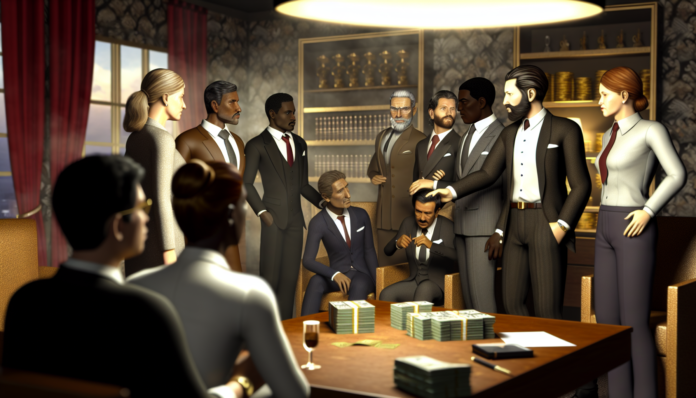Introduction
In the annals of Russian history, few tales encapsulate the tempestuous relationship between love, power, and scandal quite like that of Grigori Rasputin. A mystic and advisor to Czar Nicholas II, Rasputin’s life was as controversial as it was captivating, stirring the pot of elite Russian society in the early 20th century. During a time when moral codes were strictly enforced, his unorthodox methods and rumored liaisons challenged the very fabric of the Russian aristocracy, leading to explosive repercussions that would shape the course of history.
The Scandal
Rasputin, who emerged from the Siberian countryside, captured the hearts of the Romanov family and the attention of society at large. Often called the “Mad Monk,” rumors swirled around his supposed influence over the royal family, particularly over the Czarina Alexandra, who turned to him for guidance in dealing with her son Alexei’s hemophilia. This closeness fueled wild speculation about Rasputin’s alleged sexual escapades.
One of the more lurid stories involved the claim that Rasputin was not merely a spiritual advisor but also engaged in illicit affairs with various women of the imperial court. Contemporary accounts hinted at wild parties in St. Petersburg, where Rasputin mingled with elite women, sometimes leading to scandalous encounters. In 1916, the publication The Times of London described him as “a creature of vice,” highlighting how the insinuations surrounding his lifestyle not only tarnished the Romanov reputation but also led to severe political repercussions.
Rasputin’s behavior was both condemned and glamorized by the public; his magnetic allure and enigmatic persona contributed to a fascination with his lifestyle. However, the most damning event came when a group of nobles, fearing Rasputin’s influence over the Czar, conspired to assassinate him—a plot that eventually claimed his life but solidified his status as a controversial figure in Russian history.
Moral and Cultural Analysis
The societal reaction to Rasputin’s scandalous behavior was twofold. While some segments of Russian society were scandalized by his alleged affairs and perceived debauchery, others viewed him as a necessary conductor of the royal family’s tumultuous emotional landscape. The sexual liberation associated with Rasputin’s actions struck a chord; many aristocrats secretly admired his boldness, even if they wouldn’t openly admit it.
Consequences for Rasputin were severe. His infamous lifestyle led to ostracization by many within elite circles and ultimately culminated in his assassination by noble conspirators seeking to restore the Romanov reputation. This reflects a crucial historical contrast; while scandal involving sexual liaisons in 1916 could drive someone to death, the same affair today would likely be met with intrigue and media sensationalism rather than fatal consequences.
If Rasputin were alive today, public perception might pivot dramatically. Social media platforms would amplify his exploits, likely leading to a grueling public examination of his life—ranging from gossip to outright critique. While today’s society may not explicitly endorse his actions, the attention afforded to figures like Rasputin could easily elevate him to cult status, fueling a fascination with “bad boys” and the mystique of their lifestyles.
In a modern context, dialogues on consent and relationship dynamics would overshadow the simpler moral judgments of Rasputin’s time, allowing for a richer conversation about power, femininity, and masculinity that invites both critique and empathy. The past and present thus engage in a continuous dialogue, shaping our understanding of scandal and the elite’s human complexities.

